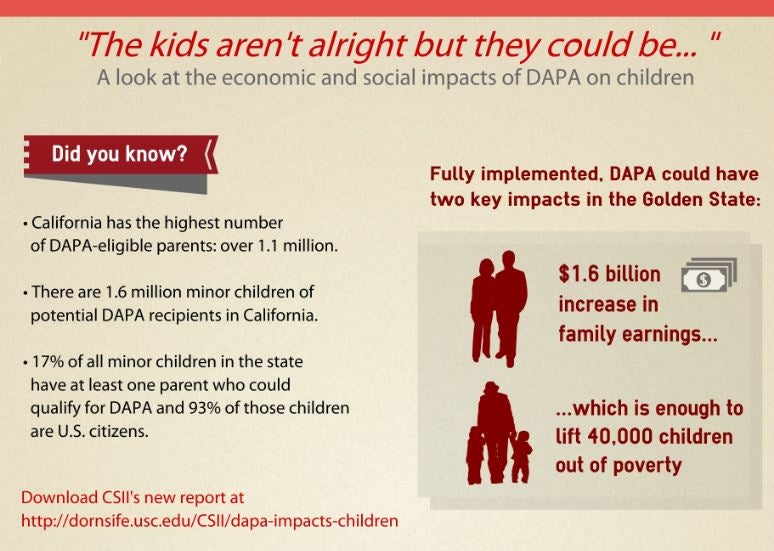
March 11, 2015
By Manuel Pastor, Jared Sanchez, and Vanessa Carter
Please note: reports dated earlier than June 2020 were published under our previous names: the USC Program for Environmental and Regional Equity (PERE) or the USC Center for the Study of Immigrant Integration (CSII).
In this brief, the USC Center for the Study of Immigrant Integration takes a closer look at the significant economic and social impacts of DAPA on an estimated 5.5 million U.S. citizen children.
The brief presents national level data with a special focus on California, where 30% of the country’s DAPA-impacted children reside. CSII researchers estimate that full implementation of DAPA has the potential to boost family earnings in California by nearly $1.6 billion and bring nearly 40,000 children out of poverty.
Key Findings
In the U.S.:
- There are approximately 3.7 million parents eligible for DAPA.
- There are 6.3 million children of DAPA-eligible parents, and 86% (5.5 million) of those children are U.S. citizens.
In California:
- 1.1 million parents qualify for DAPA, and nearly 93%—1.6 million—of their minor children are U.S. citizens. (See the full chart in the brief for detailed state rankings for numbers of DAPA minor children)
- The total earnings of California’s DAPA recipients could increase by an estimated $1.6 billion.

Op-Ed
March 18, 2015
Read Manuel Pastor’s op-ed in the Sacramento Bee >>
Press Release
March 11, 2015
Contact: Gladys Malibiran, CSII Communications Specialist
213-821-5258 malibira@usc.edu



